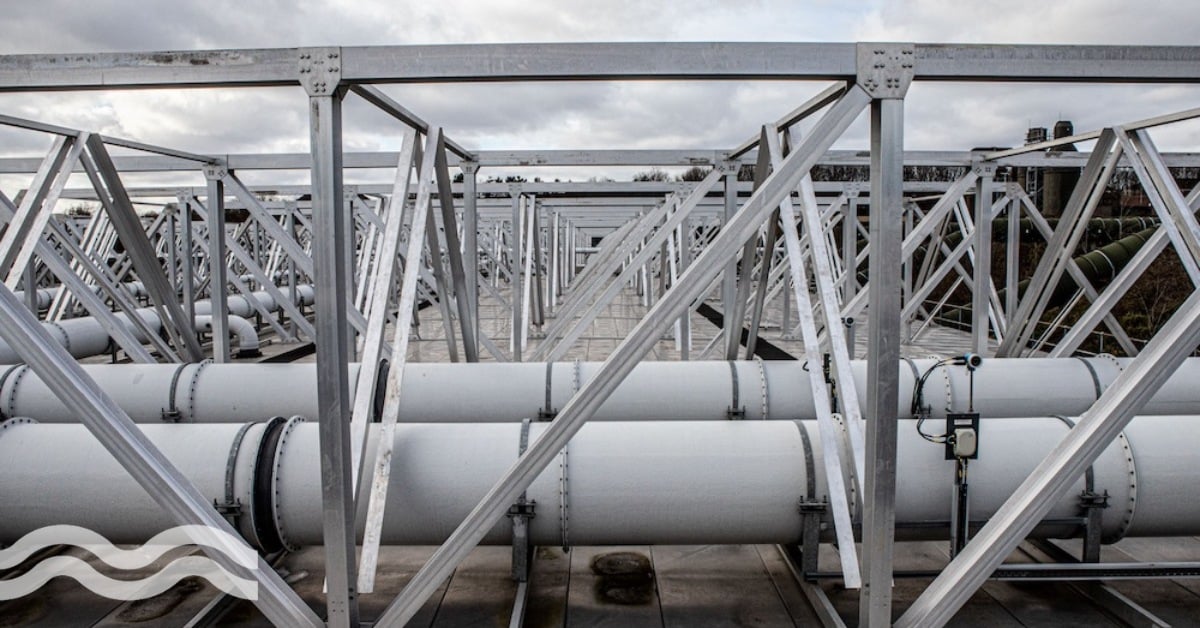
From keeping track of the evolving PFAS narrative, to driving increased digital inclusivity and CSO monitoring to accelerate remediation works – 2024 looks set to be another eventful year in water. We asked several experts for their predictions.
An eventful year ahead
What could 2024 hold for the water sector?
One thing is for certain in water: the predictable has become the unpredictable. Mega challenges continue for water companies: associated impacts from climate change, rising energy costs, contaminants of emerging concern, ageing and soon-to-be-retired workforces and more.
One year closer to the Sustainable Development Goals (SDG) target stipulating that everyone has access to water and sanitation services by 2030, the clock is ticking on the need to modernise ageing infrastructure and provide future-fit services.
To get better reading of which challenges, and potential opportunities, are in the store for the water sector this year, Aquatech Online reached out to several thought leaders asking them for their 2024 predictions.
What would you add?
Keeping pace with the evolving PFAS narrative
Reese Tisdale, president & CEO, Bluefield Research
The PFAS landscape is undergoing transformative changes globally, driven by heightened health concerns and significant policy shifts. The EPA's 'PFAS Strategic Roadmap: EPA’s Commitments to Action 2021–2024' has ignited a wave of efforts, both in the US and internationally, to combat the widespread contamination of water supplies with these persistent substances.
In 2024, PFAS solutions providers are poised for substantial growth, buoyed by strengthened policy frameworks, legal clarity, and a deeper understanding of the challenges at hand. Despite potential pitfalls, the market trajectory for remediating PFAS is more promising than ever.
Bluefield Research's revised forecast reveals a surge in spending by drinking water utilities, reaching nearly US$13.5 billion between 2023 and 2030. This uptick is fueled by the EPA's ambitious proposed Maximum Contaminant Limits (MCLs) and landmark manufacturer settlements, such as 3M's US$12.5 billion pact, adhering to the polluter-pays mantra.
Globally, PFAS dynamics are not confined to the US, with notable shifts in Europe and Australia. Europe is building momentum toward stringent regulations, mirroring the urgency seen in the US, while Australia is reassessing standards in response to local incidents and global awareness.
As we look to 2024, key focal points include the legal implications of CERCLA for water utilities, the influx of federal funding, and the pace of international alignment with US efforts. Technology and solutions providers stand ready for the dynamic journey ahead, as the PFAS narrative evolves towards safeguarding public health and the environment on a global scale.
Seeing more inclusivity in digital technology adoption
Shirley Ben-Dak, senior advisor, SWAN
In 2024, I predict that progress in operationalising digital innovations will ultimately lie within collaborative innovation fueled by interoperability. With an emphasis on APIs that enable the supply chain to work more effectively together (from co-marketing efforts to procurement, onboarding, training and so forth), we are likely to see a rise in value-add technologies.
These will be able to work more in sync to help uncover expanded data capabilities, reduce costs, streamline often siloed technology implementation processes, and mitigate risks commonly associated with digital innovation adoption across the water utility sector.
This represents a fundamental shift (in both mindset and general transactional approaches) in how the water sector has been pitched and sold. It’s not only refreshing but truly necessary if we aim to be more inclusive in terms of digital technology adoption. I also believe this will better equip utilities to view these impressive digital solutions as concerted investments rather than individual project costs, whether CAPEX or OPEX related.
Prioritising remediation works with CSO monitoring
David Lloyd Owen, managing director, Envisager
2024 will be a transitional year for combined sewer overflows (CSOs) in England and Wales. In theory, all will have been fitted with an event duration monitor (EDM). In reality, this may be compromised by the number of monitors that only work for part of the year. At least this will give us a hint about prioritising remediation works as the ones which are discharging more regularly can be identified and that better year-on-year data will be available, reflecting a wider range of weather events since 2020.
That work will depend on Ofwat’s Final Determination for AMP8 (2025-30), due in December 2024 and how much funding will be allocated to CSO programmes. The problem with event duration monitors is that they only record an event, not how much liquid is discharged, let alone what the liquid contains. In reality, we need to wait for water quality meters to be deployed downstream of the CSOs. This looks like being a slow process, with just 25 per cent of CSOs currently due to be effectively monitored by 2030.
A roadmap to integrated distributed water solutions
Newsha Ajami, chief officer for research, Lawrence Berkeley National Lab
It is exciting to see the growing interest in distributed and decentralised water solutions like small-scale and building-level water reuse (also known as onsite reuse), greywater systems, green infrastructure, and rainwater/stormwater capture.
I expect this trend to gain even more momentum in 2024 with increased implementation across the world in response to the impacts of climate extremes as communities grapple with too much or too little water. This highlights the slow but fundamental paradigm shift in the water sector because, in many ways, it’s gradually transforming our conventional and linear water infrastructure model.
In the same way, distributed energy solutions such as rooftop solar disrupted the energy sector’s business model, impacting their demand patterns, revenue stream, and load management strategies. These alternative, multi-benefit, and distributed water solutions are also slowly transforming the water sector’s antiquated business model. It is slowly building a new hybrid water infrastructure network that spans gray to green and centralised to decentralised infrastructure solutions.
This transition coincides with the digital revolution, providing a rare opportunity to transform the rigid, and ambiguous water management and governance layers, and make them more flexible, transparent, and responsive to real-time shifts. To support this evolution utilities need to:
Rethink demand projections
Embracing water reuse across all scales, from individual homes to larger neighborhoods and regions, is fundamentally reshaping water demand dynamics. It's bringing consumers closer to their water sources and, in some instances, turning them water producers. Water utilities and agencies should incorporate this shift in their demand projection process to inform their infrastructure sizing, investment strategy, and rate-setting process.
Revisit decision support tools
Water utilities need to embrace new and smarter decision support tools and risk assessment models that can help them better integrate the existing infrastructure with distributed water solutions seamlessly and manage pressure and load across their distribution network..
New digital solutions are foundational in enabling utilities to optimise the performance of their evolving system in unison to achieve systematic water resilience in the long run.
Software-as-a-service models and bioassays
Dragan Savic, CEO, KWR Water Research Institute
The world is facing more water security challenges due to increased levels of pollution, uneven spatial and temporal distribution of resources and demand, and pressing issues of ageing water infrastructure. At the same time, many countries are going through an energy transition, thus making the water sector vulnerable due to their high energy needs for their operations, such as treatment or pumping. However, water security is also essential for energy transition, which is often at risk due to water issues.
My prediction for 2024 is that the software-as-a-service model will continue to grow in the water sector as more operators embrace cloud-based solutions. This will also be supported by AI, which will allow SaaS platforms to offer data integration and advanced analytics, with both desperately needed to bring more water security.
The other prediction is related to contaminants of emerging concern that are detected in water and could pose some risk to human health and the environment. Due to the sheer number of potential compounds, they cannot be all analysed individually in the laboratory. There are other ways to assess the risks they pose.
I believe that bioassays will be used more as rapid screening analytical methods to determine whether certain contaminants are present in water in sufficiently high concentrations to be toxic. This can then help water utilities prevent pollution incidents or adjust their treatment operations in time to protect public health.
Promoting innovation in policy and regulation
Rita Amaral, Executive Director, Lis Water
Providing essential public services, water utilities are under pressure to provide good water supply and sanitation services, with adequate quality, at socially affordable prices and with an acceptable level of risk.
In the last decades new environmental, economic, societal, technological and management challenges are adding to the previous ones, including economic crisis, worsening episodes of prolonged drought, water scarcity, floods, pollutants of emerging concern, ageing infrastructure, and population ageing.
Very recently, conflicts in Ukraine and Gaza caused political instability, uncertainty, and economic distress, making the activity of water utilities even more challenging.
As a result, in 2024 water utility services will require more attention, namely by policy makers to promote innovation in policy and regulation.
Policy must guarantee physical accessibility, continuity, quality of water distributed and discharged, security and resilience. We must assure better organisation of the sector and for utilities, a positive allocation of financial resources, water and energy efficiency and decarbonization. We must collectively promote economic and financial, infrastructural, resource use, human capital, and knowledge sustainability.
Regulation must be the essential tool to transform that innovation into real practices on the ground by water utilities. Innovative policies and regulation can be the cornerstone for real impact, at scale.


